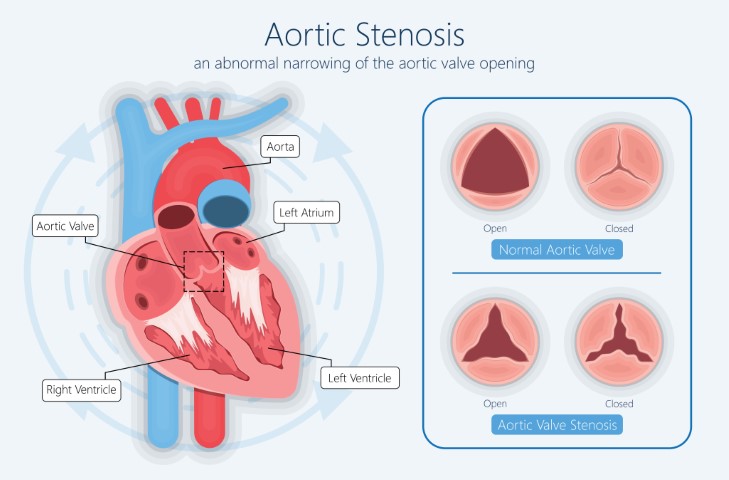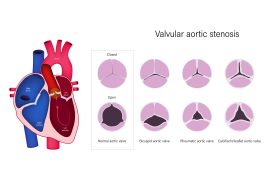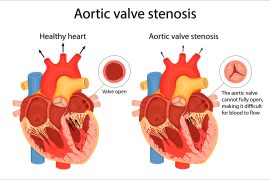There has been news of hope in recent years for the treatment of a common heart condition Aortic Stenosis, a procedure called transcatheter aortic valve replacement (TAVR). It was introduced in the mid-2000s since then as many as 400,000 patients across the world have had TAVR. According to the trials published in 2010, it was found that the TAVR procedure drastically reduced the risk of death among the inoperable patients. TAVR has been also found to be effective for patients with high and intermediate risk of serious complications from surgery or death. Whether or not you should undergo the procedure is entirely your doctor’s call, but even then, it is essential you know all that you can about the procedure.
What is TAVR used for?
TAVR is designed to treat Aortic stenosis hence it is important to understand the condition.
Aortic valve stenosis or aortic stenosis occurs due to narrowing of the aortic valve opening. It is one of the most common and serious valves disease problems. Aortic stenosis restricts the blood flow from the left ventricle to the aorta and also affects the pressure within the left atrium of the heart. Some people have stenosis due to a congenital heart defect called a bicuspid semilunar valve. During aging, this condition is developed commonly as calcium or scarring damages the valve and restricts the amount of blood flowing through.
Sometimes the left ventricle wall may show muscular thickening because the ventricle must have worked hard to pump blood through the narrow valve opening into the aorta. Appropriate treatment can help reverse or help slow down the progress of this disease.
Symptoms caused by Aortic Stenosis
Many people may not experience any symptoms until the amount of restricted blood flow becomes greatly reduced. Then the symptoms may include:
• Chest pain
• Difficulty in walking short distances
• Feeling dizzy or light-headed or even fainting
• Rapid, fluttering heartbeat
• Difficulty in sleeping or needing to sleep in the sitting posture
• Swollen ankles or feet
• Decline in energy levels
It may be important that someone suffering from aortic stenosis may not experience any of these symptoms. But if you observe a decline in routine physical activities or significant fatigue, it’s worth a doctor’s visit to check for reduced heart function.



Treatment for aortic stenosis
Your doctor may suggest a couple of tests to confirm or rule out aortic stenosis. Tests also help determine the cause and severity of the condition.
The treatment of aortic stenosis depends upon how severe your condition is. For mild or moderate cases your doctor may keep a check on you. You will have to get regular check-ups and echocardiograms. Your doctor may encourage you to make changes to improve your overall health. It might include:
• Working on weight loss
• Switching to a healthier diet
• Managing your stress
• Quitting smoking
• Exercising, depending on your symptoms
For patients with severe stenosis, treatment options may include surgical semilunar valve replacement (SAVR) or transcatheter semilunar valve replacement (TAVR).
Surgical Aortic valve replacement (SAVR) or transcatheter Aortic valve replacement
Traditional treatment of Aortic stenosis- Open Heart Surgery
Open heart surgery is considered a major operation. During an open-heart SAVR procedure, an incision is formed within the chest to access the heart during which the heart is stopped and blood is bypassed through a heart-lung machine. After which the diseased valve is removed and replaced with a replacement valve. SAVR has been the historical standard treatment for aortic stenosis for years.
For candidates who are suitable SAVR has given good outcomes to those patients. But the major drawback of SAVR is the long recovery period that generally requires five to seven days of hospitalization after surgery and more than six weeks for a full recovery. If the patient has too many medical conditions then it makes them unsuitable for SAVR.



A non-surgical treatment- TAVR
TAVR is a minimally invasive procedure. For severe aortic stenosis patients who cannot withstand open-heart surgery, it is now the first line of therapy. Unlike a SAVR procedure which involves opening the chest to exchange a patient’s semilunar valve with a mechanical or tissue valve, the TAVR approach delivers a collapsible replacement valve via catheter. This process involves inserting a hollow tube (catheter) into your aortic valve through the blood vessels. Once the new valve is placed, the balloon on the catheter’s tip is inflated to park the valve in the desired position. Once it’s done, the catheter is then removed and the new valve now does the job of regulating the blood flow.Patients who go under TAVR recover quicker compared to SAVR patients which allows them to leave the hospital and start cardiac rehabilitation sooner and that can help improve the quality of life. It is performed under sedative medication without giving general anesthesia and in most cases, the procedure takes 90 minutes.
The risks TAVR may present
TAVR has major benefits but it also has certain risks as it is a complicated procedure. The risks may include stroke, heart attack, bleeding, and the need for emergency surgery. The risks are low but there is also potential damage to the electrical system of the heart which may result in the need for the placement of a permanent pacemaker.
Is TAVR right for everyone?
Although it might seem like an obvious choice compared to the stress of open-heart surgery, a detailed review must come first because not everyone needs to undergo a TAVR procedure. All patients with severe aortic stenosis must be carefully evaluated to make the best choice for them. Patients in the high-risk category are usually likely candidates of TAVR. A potential patient must have severe aortic stenosis and a three-leaflet valve versus a two-leaflet valve. Patients who have an infection of the heart or associated aneurysms are also not advised for TAVR.
SAVR remains the preferred method for many patients, the surgical techniques have evolved and the valve technology has proven durability. Both the valves are tissue valves, the SAVR valve may be a fixed stent with an approximate lifetime of 15 years while as per The University of Texas Southwestern Medical Center TAVR valve which expands and contracts also has a lifespan of around 10 to 15 years.
If you think you have aortic stenosis, visit your doctor as soon as possible to minimize risks. Take a family member along with you for support and discuss all the options with your doctor. It is important to be evaluated by a heart team, which includes a clinical cardiologist, interventional cardiologist, and a cardiac surgeon. The team will review all your medical information and will provide you the treatment option that’s best for you along with the risks and benefits of the option.





Comments are closed.